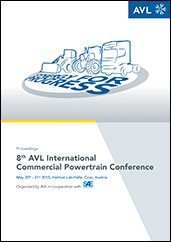Journal Article
48V Exhaust Gas Recirculation Pump: Reducing Carbon Dioxide with High-Efficiency Turbochargers without Increasing Engine-Out NOx
2021-08-23
Abstract Regulations limiting GreenHouse Gases (GHG) from Heavy-Duty (HD) commercial vehicles in the United States (US) and European Union will phase in between the 2024 and 2030 model years. These mandates require efficiency improvements at both the engine and vehicle levels, with the most stringent reductions required in the heaviest vehicles used for long-haul applications. At the same time, a 90% reduction in oxides of nitrogen (NOx) will be required as part of new regulations from the California Air Resources Board. Any technologies applied to improve engine efficiency must therefore not come at the expense of increased NOx emissions. Research into advanced engine architectures and components has identified improved turbomachine efficiency as one of the largest potential contributors to engine efficiency improvement. However this comes at the cost of a reduced capability to drive high-pressure Exhaust Gas Recirculation (EGR).



